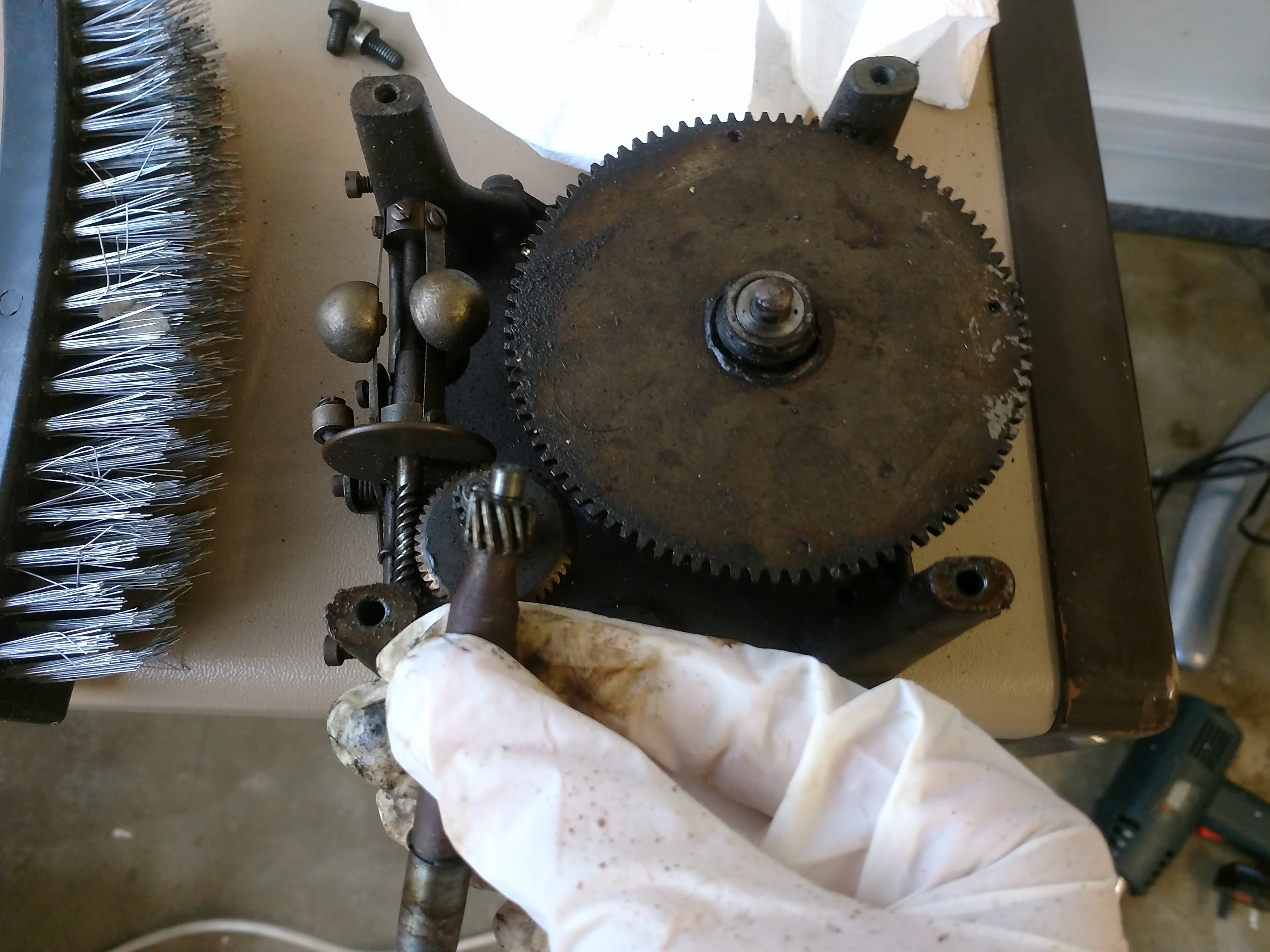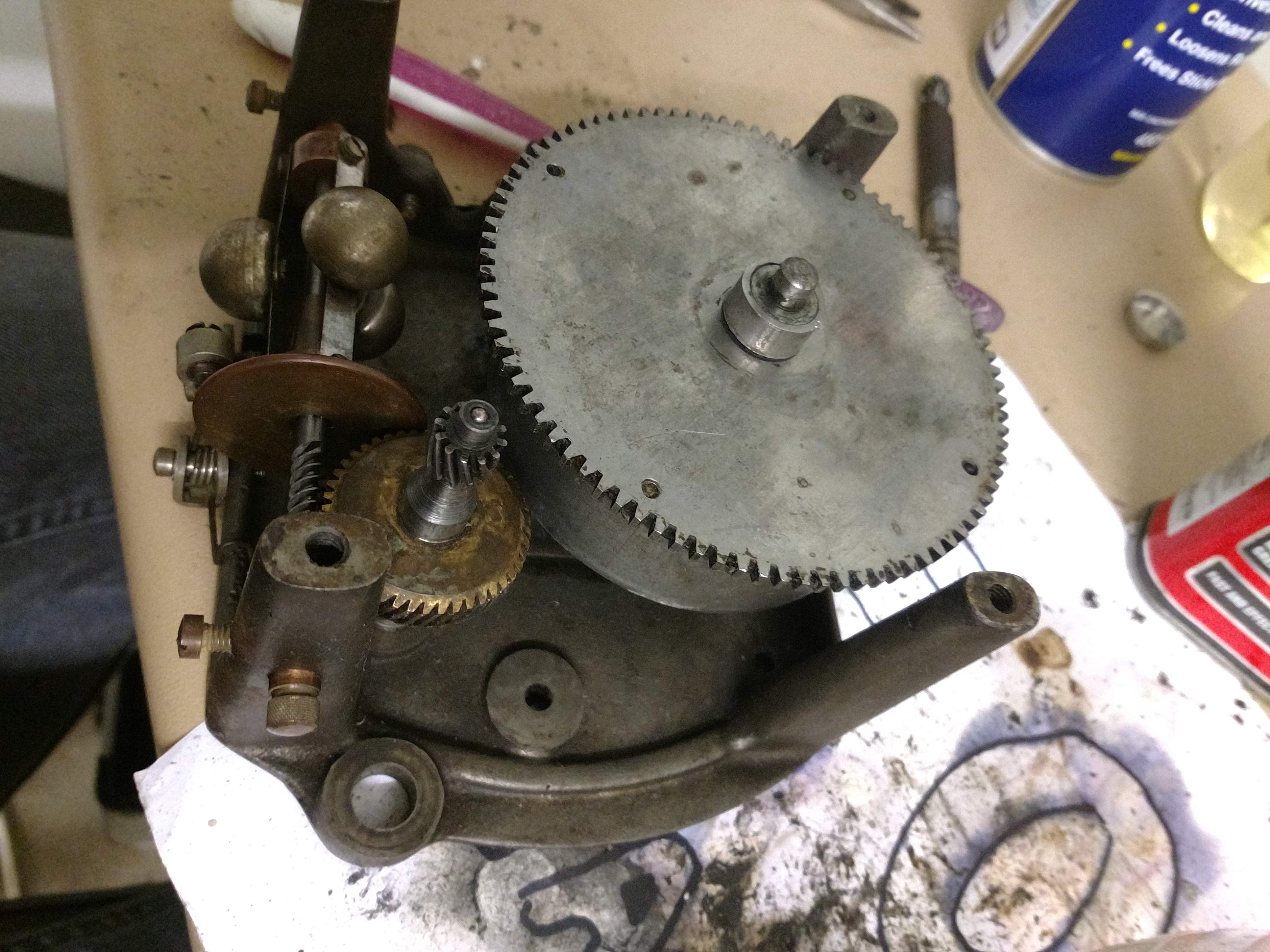Jump to: Navigation
Bob Brown's Readie Machine
in Projects. Written by Iulian Arcus.
During the last week I’ve been working on building a replica “e-reader” inspired by a concept from the 1930’s, initially designed by Bob Brown, an american inventor and writer.
The project is being spearheaded by Eric White of the American Literature department of Brookes University. To get a better feeling about the scope of the project please see his talk at TEDxWhitehall earlier this year.
I first started with a delivery of gramophone motors appropriate for the time which were quite grimy and rusty. We picked the smallest one that looked in a good enough condition.
From there it was a slow process of loosening screws with WD-40 and photographing the process so that I can reassemble it back after cleaning.

WD-40 wasn’t the best at soaking the grime so after quite a bit of cleaning I resorted to using Evo-Stik Adhesive Cleaner which I had laying around and says it’s a good cleaner. And clean it did.

I even disassembled the spring mechanism but didn’t want to have the ribbon spring on me so I only cleaned as much as I could.
On some of the exposed components there was severe rusting, especially on the top facing bits like the top plate and the disk shaft. For that I got some rust remover from the local shops which needed a couple of layers applied but in the end cleaned up most of it.
After that, everything was put back together and tried to see if it still worked. It seems like it needed a bit of oiling and the governor seems to be very touchy as to where it sits but after adjustments I had a working gramophone motor!

Part two of the project was to design a mount for a phone that would simulate the ticker tape mechanism since we didn’t have time to recreate the machine fully for an event we were preparing it for. This was done by salvaging an old square magnifying glass that had a nice bronze trim so we wanted the rest of the box to look the same. For that we 3D printed holders that would go over the nuts of the magnifying glass, a faceplate, and a box that would put a bit of distance between the lens and the phone and allow for a stronger distortion. All of this was then sanded with different grits of paper and then a couple of layers of primer and gold paint was applied (in the dead of night!).

While waiting for the prints to come out I remembered I had some pieces of cleaned-up wood sourced out of a pallet which made for a good support structure for the gramophone.
With everything ready I passed on the pieces to be stuck to the main box which was revealed later at LiveFriday: American Cool at the Ashmolean Museum.
